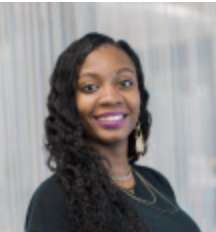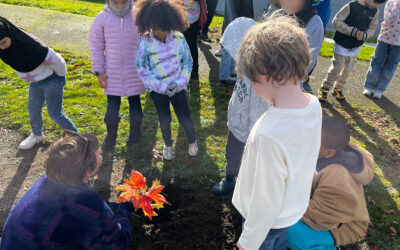Our district science team is constantly looking for ways to address the needs identified in both the instructional framework and our vision for the district and our vision for science. After attending a conference, we were instructed on AST. The authors of the book hosted a Zoom book study that included 3 states that met monthly that included discussion and reading of the book. There were discussion questions that allowed for our team and all the teams to reflect on our own work within the district. We then began to brainstorm how to roll this information out to teachers because we saw how valuable the information was and how it aligned to our district’s vision and the framework.
We created our first central office PDU where we all facilitated sessions on the chapters of AST. Not only that, but we incorporated aspects of the book’s core practices by having teachers read and answer reflection questions in their own time, and we get to discuss together twice a month for 6 months. Teachers planned out their upcoming lessons to include the new practices that they have learned about, and came back to the following sessions with feedback on their own implementation. The first year, we had a range of teachers from grades K-12 from the various curriculums in our district, as it is very large. We found that the teachers found great value in the tools that were provided, but many had not fully continued with the work outside our time in the PDU.
After our supervisor attended a culturally responsive education conference in the following summer which featured Bryan Brown as a plenary speaker, we were introduced to Science in the City. We then all received copies of the book, which we felt really aided in connecting our teachers with the students who we serve in our district and our approach to science instruction.
Similar to AST, we engaged in a book study with reflection questions as a department and began to slowly see the connections between the students mentioned in Bryan Brown’s examples and the ones that are in our science classrooms across the district, especially when it comes to how our students are articulating their science ideas in an inclusive learning environment. Having implemented AST in our first year of the PDU and getting feedback from teachers after their implementation of the work, we saw that Bryan Brown’s work provided more of the importance to center student identities and prior knowledge and abilities of science discussion, most specifically in the areas of culturally responsive teaching, valuing student identities, equity and inclusion and reflective practices.
We then incorporated Brown’s book into our PDU with teachers. In this second year of implementation in our PDU, we saw that teachers were able to find more buy-in or encouragement or empowerment to continue the work in AST with people referring their colleagues to our PDU as well as suggesting in our feedback surveys that we find ways to have the work in the PDU be presented at our central office professional learning days.
After classroom visits across the district with other content specialists and district leaders, no matter the content area or grade level, productive student talk appeared to not be occurring in the majority of classrooms. This encouraged us to not only do the PDU another year, but also revamp it as Bryan Brown’s book presented a call to action in science education within the classroom and provided teachers with specific scenarios with personas of students that they could easily relate to, especially to specific students who were traditionally underserved due to how they approached their articulation of science ideas in the home languages, or to their own practices on how they made connections with these students. In our third iteration of the PDU, we centered the first half of the year on the mindset shifts of culturally responsive teaching in an inclusive science classroom found in Science in the City and did the second half of the year with equity teaching practices and strategies that supports this work, in Ambitious Science Teaching.
The flip of the order of the use of the books in the PDU aided in providing teachers with a context to the practices and strategies we were stressing in our PDU from AST and in what we were seeing was missing in the classrooms we visited. Science in the City and they way in which we approached the discussion of science in the city as a Socratic seminar for teachers allow them to reflect on their own practices and later, with the help of AST, be able to use the practices in PDU with more determination and ownership since they had more of a rationale behind why the need for the routines in AST was necessary. Science in the City brought the missing pieces and problems of student talk absence in our classrooms, and AST was able to provide us with the “how”.





 This site is primarily funded by the National Science Foundation (NSF) through Award #1907471 and #1315995
This site is primarily funded by the National Science Foundation (NSF) through Award #1907471 and #1315995